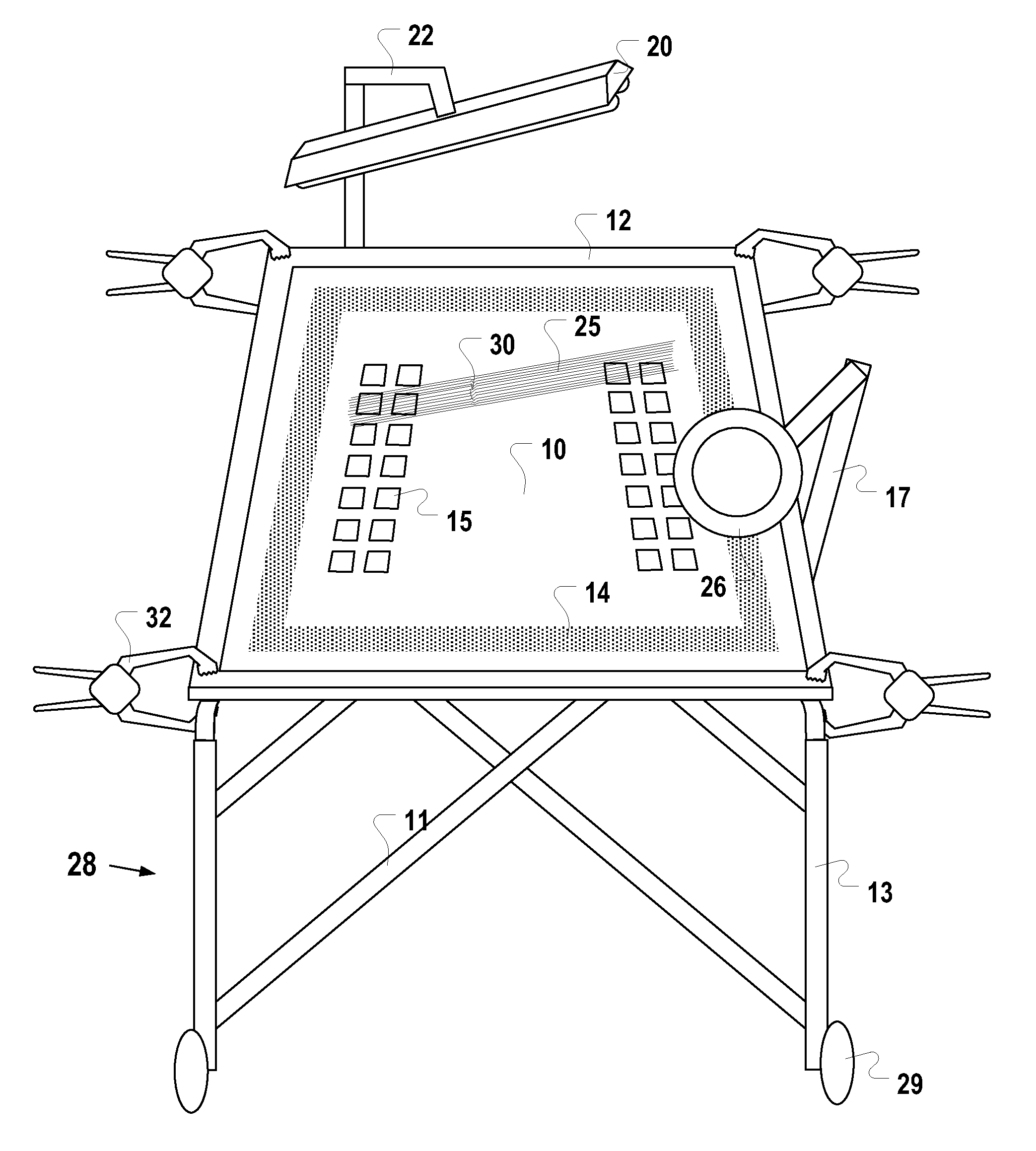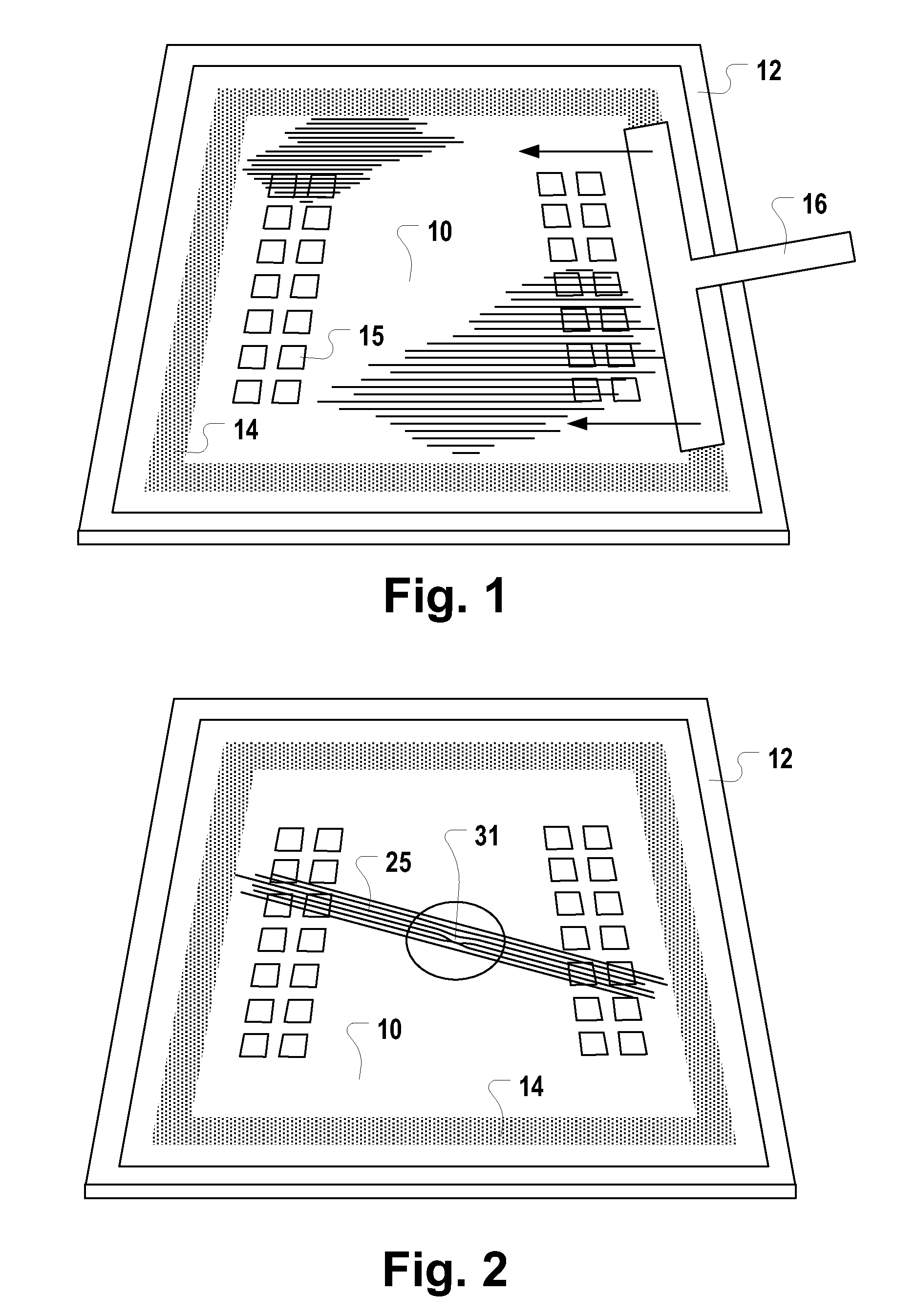Metal stencil coin repair method
- Summary
- Abstract
- Description
- Claims
- Application Information
AI Technical Summary
Benefits of technology
Problems solved by technology
Method used
Image
Examples
Embodiment Construction
[0049]FIG. 1 illustrates one embodiment of a framed metal stencil 10. The metal stencil 10 is held in tension, at about 40-50 pounds of pressure, by metal stencil frame 12. The metal stencil 10 is glued to, and held taut, by screen 14. In some embodiments, the metal stencil 10 is made of stainless steel. In yet others, it is made of a brass alloy. Generally, the metal stencil 10 is moderately reflective, providing a moderately mirror-like reflection.
[0050]In operation, the metal stencil 10 is precisely positioned, as a mask, over a plurality of printed circuit boards. FIG. 1 illustrates a series of rectangles 15. Each rectangle 15 is positioned over a corresponding circuit board. Each rectangle 15 comprises hundreds of small circular holes or apertures (not shown because of their small relative size) through which solder is squeezed onto the conducting pads of the circuit board. FIG. 1 also illustrates the direction of travel of a squeegee 16 used to apply the solder.
[0051]Even smal...
PUM
| Property | Measurement | Unit |
|---|---|---|
| Pressure | aaaaa | aaaaa |
| Diameter | aaaaa | aaaaa |
| Width | aaaaa | aaaaa |
Abstract
Description
Claims
Application Information
 Login to View More
Login to View More - R&D
- Intellectual Property
- Life Sciences
- Materials
- Tech Scout
- Unparalleled Data Quality
- Higher Quality Content
- 60% Fewer Hallucinations
Browse by: Latest US Patents, China's latest patents, Technical Efficacy Thesaurus, Application Domain, Technology Topic, Popular Technical Reports.
© 2025 PatSnap. All rights reserved.Legal|Privacy policy|Modern Slavery Act Transparency Statement|Sitemap|About US| Contact US: help@patsnap.com



